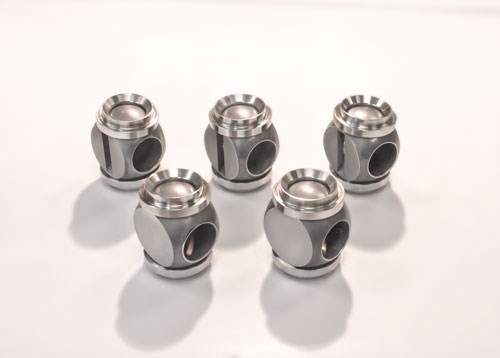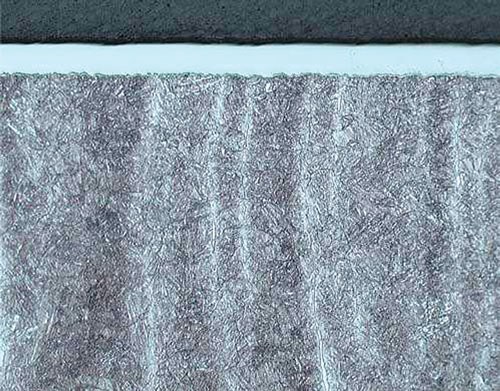Energy Coatings Go Green
For gas and oil valves, Velan adopts Hardide coating.
#energy
Since its commencement in 1950, Velan has been pushing to find new designs and technologies to produce high-performance valves. In more recent years, the Montreal manufacturer has been called upon to find solutions to technological challenges that are friendly to the environment, but still cost effective. One of those solutions is an alternative to a tried and trusted valve industry tool—hard chrome plating (HCP)—which is now under strict environmental regulation.
Velan’s solution after very tough scrutiny and consideration: nanostructured coatings.
Featured Content
“Our products are optimized to provide customers with quality, safety, ease of operation, long service life and low total cost of ownership,” says Luc Vernhes, corporate manager for Product Innovation and Technology. “‘Quality that lasts’ is not just our tagline; it’s what we put into each valve.”
Dealing with REACH
Innovation is only one key motivator for the company. Another is how to deal with REACH regulations on HCP in Europe, which are similar to the U.S. Occupational Safety and Health Administration controls on HCP and will be enacted here in 2017. HCP has been used in the valve industry for many years because it provides excellent hardness and resistance to corrosive environments, and it offers easy application and low cost.
After reviewing several alternatives, Velan identified nanostructured chemical vapor deposition (CVD) coatings as the best replacement for HCP. In tests, the nanostructured coatings performed better than HCP for sliding, wear, scratch, adhesion, toughness and corrosion testing in saltwater environments. A comparison of relative costs reveals that the nanostructured coatings kept also pace with HCP in regards to economy of scale, and when large volume and pre- and post-coating operations are in effect.
In 2007, Vernhes contacted Hardide Coatings, a United Kingdom innovator of low-temperature CVD tungsten carbide-based coatings, and expressed interest in testing the coating as a hard chrome replacement.
Hardide’s Dan Wilson and Robin Gillham worked with Vernhes for many years, and a relationship grew from basic coupon and material testing to production qualification at companies in the petrochemical and power sectors.

Results of a steam endurance test (600 psig at 600°F, 1 cycle/minute) performed on a 3-inch Class 300 Type M metal-seated ball valve.
New U.S. Plant
Meanwhile, Hardide opened a new $7 million manufacturing plant in Virginia that will help the company roll out its range of nanostructured coatings across North America.
Vernhes says that Hardide coatings extend the life of critical components across a wide range of high-wear/high-value industries and applications, including oil and gas, aerospace, defense, petrochemicals and motorsports. Applications include downhole tools, control valves, cylinders, rotors, pistons, pins, landing gear, turbine blades and many flow control components.
Over the years, Velan provided valves with tungsten-carbide-based CVD coatings for demanding applications in which the standard HCP coating was not suitable, especially in corrosive and erosive environments common in the petrochemical sector, where metal-seated ball valves protected by HCP were wearing prematurely. Velan collaborated with the end user to clearly assess what was causing the premature failure, and the company then selected the tungsten-carbide-based CVD coating as the most suitable alternative material. Since then, metal-seated ball valves provided with this coating have been installed in particularly severe service applications and have performed to satisfactory results while radically increasing time between failures.
Velan also uses tungsten-carbide-based CVD coatings for industries that cannot support plating processes, such as certain nuclear power plants. In those applications, Velan traditionally offered alternative wear-resistant materials to protect severe-service metal-seated ball valves, but these coatings provided either lower cycle life or higher cost than conventional HCP. Velan now recommends tungsten-carbide-based CVD coatings.

Known informally as “fish bowls,” these Velan balls and seats feature prominently in the top-entry ball valve design.
CVD Successes
“Velan has also successfully used the CVD tungsten-carbide based coating on all wetted trim parts of the Torqseal triple-offset butterfly valve for severe service applications,” says Craig Bekins, Velan product manager for triple offset valves. “Without Hardide, this would not have been possible.”
The company says the most notable case was an application that included a combination of dry hot media along with fast and frequent operation. After reviewing available materials, it was determined that the Hardide technology could be applied to all internal components without disrupting the precise geometry that the triple-offset valve requires to maintain tight shut-off. The subject valves now have been in service for more than two years and through thousands of cycles.

This micrograph shows the Hardide coating on austenitic stainless steel.
Velan worked with Polytechnique Montreal University on a research paper in the journal “Materials Chemistry and Physics” entitled “Alternatives for hard chrome plating: Nanostructured coatings for severe service valves” and is partnering again with the university to develop novel combinations of overlay layers with the Hardide coating. Vernhes is in charge of this area of research and development, which is designed to demonstrate the synergy between hard-facing materials and nanostructured films.
“In this study, we want to characterize graded coating systems composed of two things: a thin top layer that provides superior sliding wear properties, and a hard-facing interlayer that reduces stresses between the top layer and the soft base material,” Vernhes says.
The hard-facing interlayer minimizes stresses and eliminates the risk of indenting or breaking the thin hard top layer—the so-called “eggshell-effect”—which increases the load-carrying capacity of the overall coating system.

Velan’s Torqseal triple-offset butterfly valve features a CVD tungsten-carbide-based coating on all wetted trim parts for severe service applications.
“While we’re in the early days of research for this project, some multi-layer, hybrid-graded coating systems have already demonstrated sliding wear and mechanical performances that greatly exceed those of the standalone surface treatments,” he says.
By working with Hardide Coatings and conducting independent research, he says Velan “has been able to identify a cost-effective, off-the-shelf coating with the potential to fully replace hard chrome on our severe service applications.”
Tracy Fairchild is director of marketing communications at Velan. For information, visit velan.com or hardide.com, or email chris.oettel@velan.com.
Originally published in the March 2016 issue.
RELATED CONTENT
-
Nickel Electroplating
Applications, plating solutions, brighteners, good operating practices and troubleshooting.
-
Cleaning, Pretreatment to Meet Medical Specs ISO 13485 or FDA 21 CFR820
Maximilian Kessler from SurTec explains new practices for industrial parts cleaning, metal pretreatment and decorative electroplating in the medical device industry.
-
Stripping of Plated Finishes
The processes, chemicals and equipment, plus control and troubleshooting.


















